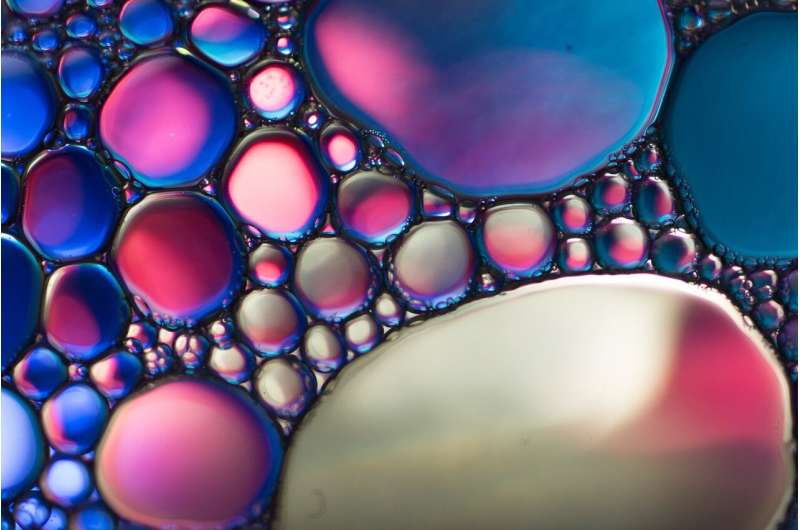New NMR approach for studying droplet-shaped cell content

Researchers in Utrecht have found a new way to observe membraneless compartments at an unprecedented level of resolution. The existence of these so-called biomolecular condensates in the cell contradicts every textbook on the subject. This is the first time that they have been observed in the test tube with a high degree of precision. The researchers and their colleagues in Germany will publish their findings in Nature Communications on 4 October 2019.
Secondary school students still learn that cells hold organelles that are surrounded by a membrane, but their biology textbooks are now obsolete. For the past few years, scientists have known that in addition to the membrane-covered organelles, like mitochondria and the Golgi complex, there are also membraneless compartments within the cell called biomolecular condensates.
"These 'droplets' consist of proteins and RNA, and are distributed throughout the cell. The condensates occasionally form islands: The concentration of certain proteins suddenly increases, creating clusters of molecules. That happens all over the cell, in the cytoplasm, but also in the nucleus," explains last author Marc Baldus from Utrecht University. "It's completely different from what's in the textbooks. Not everything has a fixed position, like we'd always thought; even DNA can form these droplets."
Droplets
Scientists have known about these membraneless compartments for a few years now, but the resolution of a normal microscope, tomography, and MRI has not been sufficient to visualize the dynamic nature of these droplets at the atomic level. Utrecht University has advanced magnetic resonance (NMR) equipment to observe complex systems. In this study, the researchers worked with the group led by Remco Sprangers at the University of Regensburg to develop a new NMR approach to study proteins that form droplets: a combination of 'solid-state' and 'solution state' NMR.
"A large proportion of the proteins don't have a fixed structure; they shift from one form to another. The unfolded parts of the protein can rapidly move, and are available to interact with other proteins. We can now follow these processes at high resolution; where the protein binds, to which other protein it binds, and we will eventually be able to see how fast it happens as well," says Baldus.
Diseases
Biomolecular condensates often contain proteins that play a role in diseases such as cancer, Alzheimer's disease and ALS. "For this reason, the pharmaceutical industry is now interested in them as well: more knowledge about their structure might make it possible to administer medications more accurately," Baldus explains. "But that's step two. For the first time, we've proven that we can study these droplets at the highest resolution, and now we'll start working on identifying all of the details in these systems."
More information: Atomic-level insight into mRNA processing bodies by combining solid and solution-state NMR spectroscopy. Nature Communications, 4 October 2019. DOI: 10.1038/s41467-019-12402-3
Journal information: Nature Communications
Provided by Utrecht University Faculty of Science



















